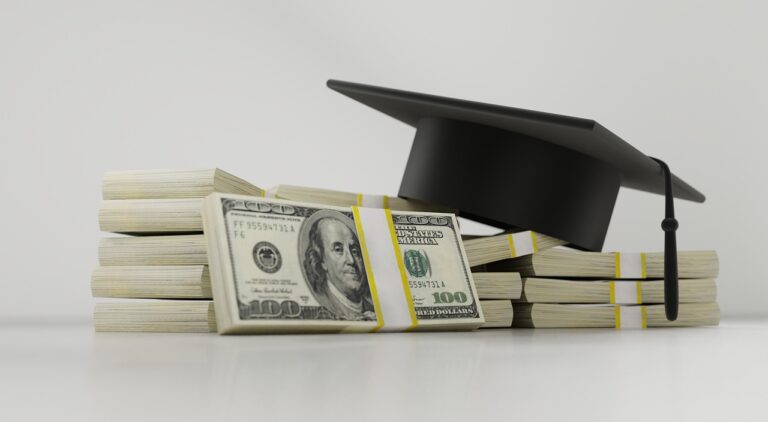CREDIT:https://pixabay.com/
Student loans are a significant financial commitment that millions of students undertake to fund their education. With the rising costs of higher education, understanding the ins and outs of student loans—interest rates, repayment options, forgiveness programs, and refinancing strategies—is essential. This article provides a detailed look at these aspects, helping students and graduates make informed financial decisions.
1. Types of Student Loans
Student loans primarily fall into two categories: federal and private.
- Federal Student Loans: Offered by the U.S. Department of Education, these loans come with borrower protections, fixed interest rates, and various repayment options. They include Direct Subsidized Loans, Direct Unsubsidized Loans, and PLUS Loans.
- Private Student Loans: These are offered by banks, credit unions, and other financial institutions. They often lack the flexibility and protections of federal loans and may have higher, variable interest rates.
2. Student Loan Interest Rates and Repayment Plans
The cost of a student loan depends heavily on its interest rate and repayment terms. Here’s what borrowers need to know.
- Interest Rates: Federal loans have fixed interest rates set by Congress. Rates vary by loan type; for example, Direct Subsidized and Unsubsidized Loans have different rates than PLUS Loans. For the 2023-2024 academic year, rates range from 5.50% to 8.05% for federal loans. Private loan rates vary widely and are based on credit scores and market conditions.
- Repayment Plans: Federal student loans offer multiple repayment options, including:
- Standard Repayment Plan: Fixed payments over ten years, suitable for those who can afford a higher monthly payment.Graduated Repayment Plan: Starts with lower payments that increase every two years over a ten-year period.Income-Driven Repayment Plans (IDR): Payments are based on the borrower’s income and family size, extending up to 20 or 25 years. These include PAYE, REPAYE, IBR, and ICR plans.
3. Loan Forgiveness and Cancellation Programs
For borrowers working in public service or certain professions, loan forgiveness can be a lifeline.
- Public Service Loan Forgiveness (PSLF): Available to borrowers working in qualifying public service jobs. After 120 qualifying payments, remaining loan balances may be forgiven.
- Teacher Loan Forgiveness: Teachers in low-income schools may be eligible for forgiveness of up to $17,500 on their Direct Loans or FFEL Program loans.
- Income-Driven Forgiveness: After 20-25 years on an IDR plan, any remaining balance may be forgiven, though this is typically taxable.
These programs have stringent requirements, and borrowers need to carefully document their payments and employment history.
Source: Department of Education.
4. Impact of Student Loans on Financial Health
Student loans impact borrowers’ financial health in both the short and long term.
- Credit Score: Timely payments can help build credit, while missed payments can harm it. Federal loans are generally reported to all major credit bureaus, impacting borrowers’ credit profiles.
- Debt-to-Income Ratio (DTI): High student debt can increase the DTI ratio, affecting a borrower’s ability to qualify for other loans, such as mortgages.
- Savings and Retirement: Monthly student loan payments can delay savings for emergencies, homeownership, and retirement, potentially affecting long-term financial security.
Graduates should create a realistic budget that balances loan payments with savings and investment goals.
Source: Consumer Financial Protection Bureau (CFPB).
5. Navigating Student Loan Consolidation and Refinancing
For some borrowers, consolidating or refinancing loans can simplify payments and potentially reduce interest rates.
- Federal Consolidation: Borrowers with multiple federal loans can consolidate them into a single Direct Consolidation Loan. This does not reduce the interest rate but simplifies repayment and may extend the repayment term, lowering monthly payments.
- Private Refinancing: Borrowers may refinance through private lenders to obtain a lower interest rate or shorter repayment term. Refinancing federal loans with a private lender, however, means losing federal protections and flexible repayment options. Source: The Institute for College Access & Success (TICAS).
Conclusion
Student loans are a valuable resource for accessing higher education, but managing them effectively is essential. By understanding loan types, interest rates, repayment plans, forgiveness programs, and refinancing options, borrowers can make informed choices to support their financial futures. For more detailed guidance, consult resources like the Federal Student Aid office or the Consumer Financial Protection Bureau.
References
- Federal Student Aid.
- Department of Education.
- Consumer Financial Protection Bureau (CFPB).
- The Institute for College Access & Success (TICAS).


